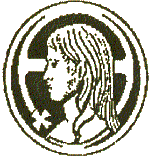 |
Albigensianism and the Holy Name Society |
 |
Albigensianism and the Holy Name Society |
by Raymond DiBona, T.O.P. and Edgar G. Perry Deriving its
name from the city of Albi in Southwestern France where it had become powerfully
entrenched during the 12th and 13th centuries, Albigensianism (also
known as Catharism) made significant inroads in this rich and culturally influential area
by echoing the teachings of earlier heresies, specifically Gnosticism and Manichaenism.
Its major doctrine according to the Medieval chronicler Raynaldus was that there exist
“… two Creators; viz. one of invisible things whom they called the benevolent
God, and another of invisible things, whom they named the malevolent God. The New
Testament they attributed to the benevolent God; but the Old Testament to the malevolent
God, and rejected it altogether, except certain authorities which are inserted in the New
Testament from the old…”1
Based on this theological construct, the Albigenses went on to teach that the Christ, who was born of a woman in Bethlehem and was crucified at Calvary, was of the visible world and thus had a sinful nature. The “good” Christ, on the other hand, never took on the evil flesh of this world nor was He ever in this world except spiritually. The sacraments of the Church were also rejected, marriage was discouraged, and the Resurrection of the body on the Last Day was denied. Boasting a highly developed liturgy and theology, an established hierarchy, and a substantial following, the Albigenses posed an exceptionally serious challenge to the Medieval Church. Over time, this heresy gained considerable support among the educated and noble classes, including that of Count Raymond VI of Toulouse, one of the most powerful lords in all of Europe. While historians still debate the extent to which the common people accepted the Albigensian doctrines, the Church recognized the threat posed by this heresy. In response, the pope initially attempted to deal with the heresy by sending missionaries into the region to reconvert the faithful, a move that won back many souls. Fearing further losses, some of the movement’s leaders objected to the work of Rome’s orthodox preachers and responded violently. The murder of papal legate, Cistercian Peter de Castelnau, caused Pope Innocent III to proclaim a crusade in 1208, resulting in a long and bloody struggle (1208-1229) which eventually eliminated Albigensianism from Europe. In 1274, the Council of Lyons prescribed that the faithful should have a special devotion to the Holy Name of Jesus in reparation for the insults offered to it by the Albigensian blasphemers. Pope Gregory X selected the Dominicans to preach the devotion, sending a letter (dated September 20, 1274) to Blessed John of Vercelli, Master General of the Order of Preachers, asking his community to take on the task. Without hesitation, the master general wrote to all the order’s provincials, communicating to them the sovereign pontiff’s desire. In response, the friars enthusiastically executed the pope’s command, preaching everywhere about the power and glory of the Holy Name of Jesus. To give permanency to the devotion, it was requested that every Dominican church erect an altar dedicated to the Holy Name and that confraternities should be established under the title of the Holy Name of Jesus. |
| 1From Raynaldus, “Annales,” in S.R. Maitland,
trans., History of the Albigenses and Waldenses, (London: C.J.G. and F. Rivington,
1832), p. 392.
|